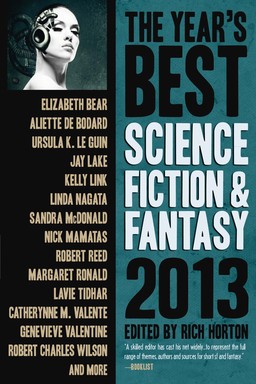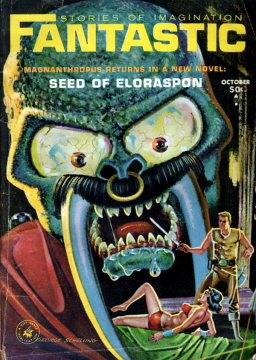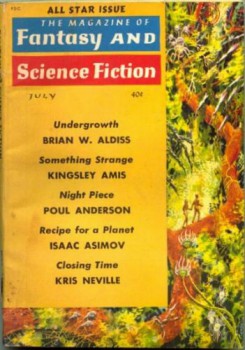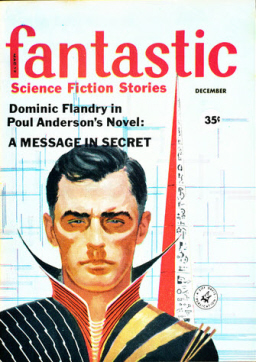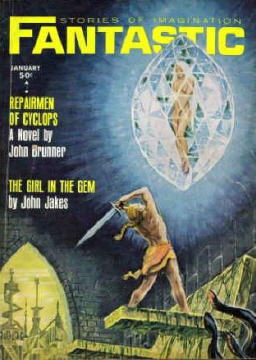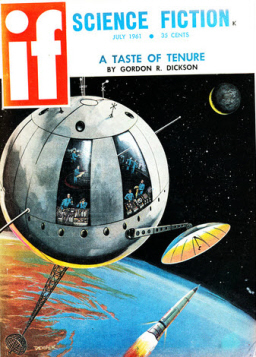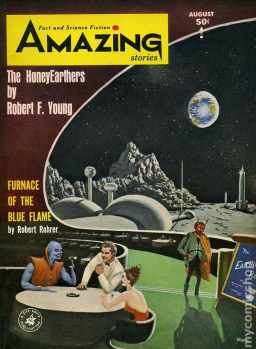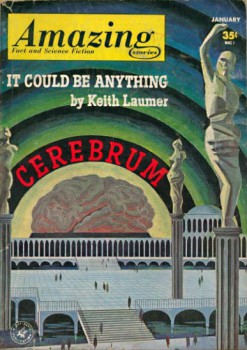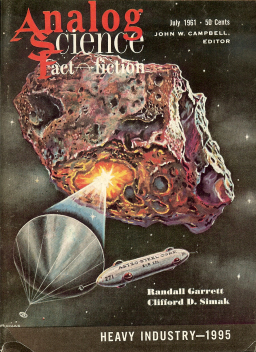Amazing Stories, January 1962: A Retro-Review
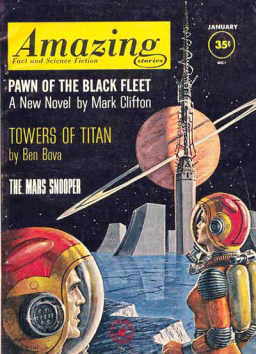 This seems to me a fairly significant issue of Amazing, in its way, though it doesn’t feature any of the really significant Goldsmith discoveries (no Zelazny, no Le Guin, no Bunch); nor are any of the stories lasting classics. But all of the writers are reasonably well-known, and it does feature one somewhat important sort-of-debut, as well as a near farewell.
This seems to me a fairly significant issue of Amazing, in its way, though it doesn’t feature any of the really significant Goldsmith discoveries (no Zelazny, no Le Guin, no Bunch); nor are any of the stories lasting classics. But all of the writers are reasonably well-known, and it does feature one somewhat important sort-of-debut, as well as a near farewell.
The cover is by Ed Emshwiller, illustrating Ben Bova’s “The Towers of Titan.” (His wife Carol appears in form-fitting spacesuit.) There is a back cover illustration too, in black-and-white, by Virgil Finlay, for the serial, Mark Clifton’s “Pawn of the Black Fleet.” Interiors are by Finlay, Emshwiller, Adkins, Summers, and Kilpatrick.
The letter column, “… Or So You Say,” has letters from Ken Winkes, H. James Hotaling, and Bob Adolfsen, none of the names familiar to me, discussing among other things the question of whether serials are a good idea.
The book review column, The Spectroscope, by S. E. Cotts, reviews Daniel F. Galouye’s Dark Universe (very favorably – and indeed the novel became a Hugo nominee), Lester Del Rey’s Winston juvenile Moon of Mutiny (very unfavorably), Arthur C. Clarke’s non-fiction collection The Challenge of the Spaceship, John C. Lilly’s Man and Dolphins, an account of the author’s research on dolphins and in particular their intelligence and capacity for language (Cotts reveals himself as rather a skeptic in this area); and also a curious review of an Ace Double, Kenneth Bulmer’s No Man’s World backed with Poul Anderson’s Mayday Orbit.
Cotts modestly praises No Man’s World as “plain uncomplicated entertainment” – no real argument there from me – but he dismisses Mayday Orbit as a “minor trifle” – in itself not an absurd judgment, but if it is a minor trifle then so too surely is No Man’s World!
